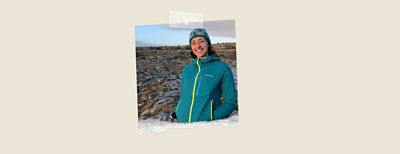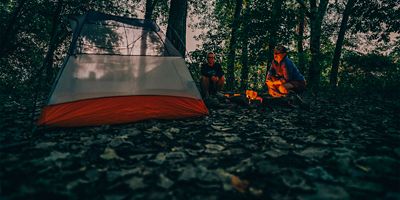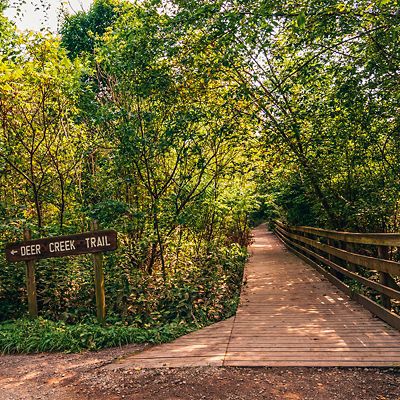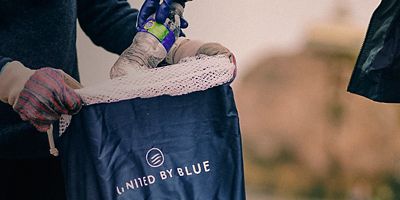
If you spend much time hiking or biking in the wooded hills southeast of Pittsburgh, you might just run into an artist on a bike. Stephen Haynes, 43, who favors plein air painting to create his warm, impressionistic landscapes, is fond of loading up his mountain bike-trailer combo rig with paint and canvases and pedaling to his next point of inspiration. “One of the best things about it is you’re moving at a slow enough speed to register things,” Haynes says—not to mention, he’s also an avid mountain biker who just enjoys the ride.
When he’s not cruising the trails looking for a painting-worthy landscape, the Irwin, Pa., resident does freelance illustrations, teaches a class in expressive painting for his local art league, writes for Public Lands, and is “what we tongue-in-cheek call the house husband,” he says, “I do all the cooking, cleaning, shopping.” Haynes also recently submitted his second application for an art grant from the Guggenheim Foundation. You can find his work at The Trippe Gallery in Easton, Maryland, and on his website.
We caught up with Haynes on a handful of topics, from painting at a bicycle pace and finding inspiration in the ordinary, to why he’s drawn to creating outdoors.
For Haynes, bicycles and work are often intertwined.
STEPHEN HAYNES: I was the art director for a publishing company called Rotating Mass Media for about a decade. They put out magazines focused on bicycle stuff, Bicycle Times and Dirt Rag magazine. Dirt Rag was known for its illustrative covers, and I ended up doing a lot of them. The publishing company folded in January of last year after 30 years in service. That was a bit of a low.
But through my connections with the bike industry, I’ve been able to string together a fair amount of freelance stuff. People have come to recognize my style, and that normally translates into T-shirt designs. [Right now] I’m working on an illustration for an indoor bike park called The Wheel Mill for a T-shirt. It’s an astronaut on a BMX bike doing a tweaked-out turndown. It’s just sort of fun and playful, with a kind of ’80s vibe to it (the ’80s, the gift that keeps on giving to the art world).
In fact, a bike is a critical part of his painting setup. Haynes often heads out to paint outdoors, riding a mountain bike with a trailer loaded with his art supplies.
I have a Burley Coho XC, which is meant to be a rough-and-ready trailer. It has a kickstand, a single wheel, and it tracks in line with the mountain bike. It gives me just enough space to fit my full French easel. I built these cardboard panel carriers that hold the wet canvas—I paint really thickly, so it gets interesting sometimes depending on how rough the terrain is.
The best advice [for plein air painting] is, paint the first thing that makes you stop. The trap that plein air painters fall into is the thought process that, well, there’s probably something better. Then you spend three hours looking for something better. And, especially in a car, it can be difficult to find somewhere to stop. With a bike, not only is everything I need is right behind me, but I’m moving at a pace that’s faster than walking but slow enough that I can register certain things in the landscape.






